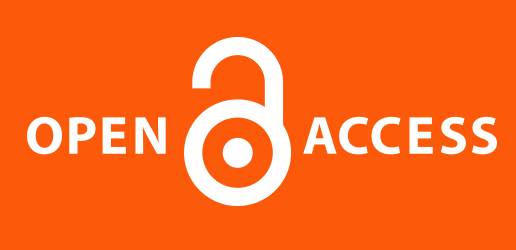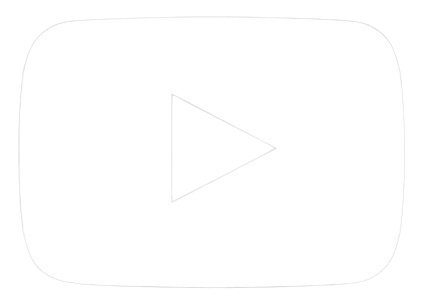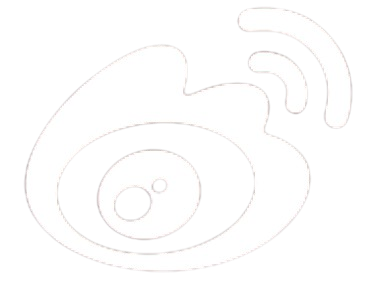
Cross-Cultural Communication Strategies for Traditional Chinese Medicine: A Pathway to Cultural Confidence
摘要
In the context of globalization, the cross-cultural dissemination of traditional Chinese medicine culture holds profound significance for promoting China’s excellent traditional heritage and fostering cultural confidence. This study focuses on the construction of cross-cultural communication mechanisms for TCM culture, systematically examining key dimensions such as the integration of communication subjects, precision in content matching, diversification of communication channels, and effect evaluation and optimization. It further explores how these mechanisms enhance cultural confidence through pathways such as deepening cultural cognition, strengthening emotional identification, and improving value identification. By establishing a scientific and efficient cross-cultural communication framework, this study aims to provide theoretical insights and practical guidance for global spread of TCM culture, enhancement of Chinese culture’s international influence and boosting of national cultural confidence.Introduction
Traditional Chinese Medicine (TCM) culture represents a profound treasure of China’s rich heritage, embodying the nation’s millennia-old medical wisdom and philosophical thought. In today’s era of globalization, where cultural exchanges are accelerating, the cross-cultural dissemination of TCM culture presents both unprecedented opportunities and significant challenges. The establishment of an effective communication mechanism is crucial—not only for the global inheritance and development of TCM culture but also for reinforcing national cultural confidence and elevating the international influence of Chinese culture.However, overcoming communication barriers remains a critical hurdle in achieving widespread recognition and acceptance of TCM worldwide. Addressing these challenges —ensuring TCM culture is authentically and effectively communicated to global audiences—has become an urgent and vital area of research, with far-reaching implications for cultural exchange and national identity.
1. Integration of Communication Subjects
1.1 Clarifying the Roles of Multiple subjects
In the complex landscape of cross-cultural dissemination of TCM culture, a multi- stakeholder collaborative framework is essential. The government, enterprises, social organizations, and individuals each contribute distinct yet complementary roles in advancing TCM's global reach.
The government serves as the primary driver of TCM's internationalization, leveraging its administrative authority and long-term vision to establish foundational frameworks. The governmental key initiatives include crafting strategic plans for TCM's “going global" efforts under the Belt and Road Initiative's international cooperation framework for TCM, promoting TCM's inclusion in international medical classifications to enhance its global recognition and facilitating cross-border cultural exchanges through high-level agreements and international partnerships[1].
Private enterprises play a pivotal role in commercializing TCM culture, embedding traditional knowledge into modern consumer products. Notable examples include Yunnan Baiyao's Herbal Toothpaste,as a successful case of integrating TCM herbal formulations into global oral care products. Tong Ren Tang's Overseas Pharmacies expand TCM's accessibility through international retail networks, preserving traditional practices while adapting to modern healthcare demands. Furthermore, Innovative Product Development combines TCM processing techniques like formula compatibility with contemporary health trends like skincare and wellness. Beyond state and corporate efforts, non-governmental organization, academic institutions, and cultural advocates serve as critical intermediaries to facilitate workshops, exhibitions, and academic collaborations to promote TCM's philosophical and therapeutic values. Local practitioners and enthusiasts will educate global audiences through experiential learning such as acupuncture demonstrations and herbal medicine workshops.
1.2 Establishing a Collaborative and Interactive Mechanism
Effective cross-cultural dissemination of Traditional Chinese Medicine (TCM) requires breaking down information barriers and fragmented resource allocation through structured multi-stakeholder collaboration. This mechanism should leverage the complementary strengths of government, enterprises, academic institutions, and cultural practitioners to maximize impact. The government plays a pivotal role in facilitating this collaboration through establishing dedicated funding programs to support joint overseas cultural promotion initiatives between enterprises and academic institutions, creating enabling policy frameworks that encourage public-private partnerships, providing diplomatic endorsement to enhance the credibility and reach of TCM cultural events. In addition, to ensure effective cross-cultural communication, enterprises should collaborate with TCM educational institutions to cultivate talents who possess deep technical expertise in TCM theories and practices, strong communication skills for cross-cultural engagement as well as global perspectives on healthcare trends and cultural adaptation[2-3].
The "Overseas Traditional Chinese Medicine Culture Week" jointly held by local governments and traditional Chinese medicine enterprises not only invites local political leaders to participate by leveraging the government's credibility, but also relies on the resources of enterprises to achieve venue arrangement, product exhibition and sales, and the implementation of experience activities. The interactive model creates a synergistic relationship between policy support and market dynamics, ensuring cultural dissemination activities benefit from both official endorsement and grassroots accessibility.
1.3 Strengthen the capacity building of the main body
Enhancing the capacity of key stakeholders is crucial for bolstering the outreach of TCM culture globally. The government must take a leading role in cultivating a pool of talents specialized in international communication. By doing so, it can nurture policymakers who have a profound understanding of both TCM culture and the rules of international discourse. These individuals will be instrumental in shaping policies that promote the global dissemination of TCM. Enterprises should focus on enhancing their cultural creativity. They need to transform the complex and intricate theories of TCM into product designs that are not only elegant but also resonate with international aesthetics. This will make TCM more accessible and appealing to a global audience.
Social organizations can play a vital role by fostering dialogue between Chinese and foreign scholars. Organizing cross-border academic forums can provide a platform for in-depth professional exchanges. Through these interactions, mutual understanding and collaboration in the field of TCM can be significantly enhanced.
Practitioners of TCM should be encouraged to obtain international certification and engage in overseas medical services and cultural lectures. Presenting themselves with a professional image will help build trust and credibility in the global community. Each individual can act as a "luminous body" for cultural dissemination, contributing to the broader effort of promoting TCM culture.
When all stakeholders work together and play their roles effectively, their combined efforts will create a powerful force. This collective strength will pave the way for TCM culture to shine on the global stage[4-5].
2. Content Adaptation Optimization
2.1 Cultural Decoding of Terminological Translation
The translation of TCM terminology transcends mere linguistic conversion. It constitutes a sophisticated cultural decoding process that bridges epistemological divides between Eastern and Western paradigms. Effective translation requires not only linguistic accuracy but also cultural mediation, transforming abstract concepts into accessible frameworks for international audiences. Philosophical concepts such as "Yin and Yang" exemplifies this challenge. If it is directly translated as "Yin and Yang", Western audiences may perceive it as an opaque, esoteric concept. However, when interpreted as "the dynamic balance of unity of opposites within nature", and supplemented with concrete metaphors such as the alternation of day and night or seasonal cycle, this concept will be rendered both intelligible and resonant with Western audiences' experiential knowledge. Also, the principle of "Syndrome Differentiation and Treatment" benefits from similar contextualization, where a literal rendering (Syndrome Differentiation and Treatment) may appear overly clinical or abstract whereas coupling the term with a practical example such as differentiating between wind-cold and wind-heat patterns in cold treatment demonstrates its clinical applicability while maintaining TCM's theoretical integrity.
This dual approach of retaining TCM's conceptual essence while lowering cognitive barriers ensures that TCM's unique worldview is not diluted through oversimplification. Familiar analogies and contextual examples are to demystify complex ideas and facilitate the assimilation of TCM knowledge into the target audience's existing conceptual frameworks. Ultimately, such translation strategies transform TCM from an alien body of knowledge into a culturally adaptable wisdom system, enabling its seamless integration into global healthcare discourse.
2.2 Resonance Construction of Cultural Values
TCM culture complements rather than conflicts with Western culture, as they share significant overlapping values. For instance, TCM's emphasis on "preventing diseases before they occur" aligns with the health management focus of modern preventive medicine. Its Five Elements theory, highlighting mutual generation and restraint, shares logical parallels with systems thinking. During dissemination, TCM meridians can be meaningfully compared to Western theories of nerve conduction. The concept of an "energy network" offers a familiar scientific context for Western audiences to grasp the wisdom of TCM meridians.
Moreover, TCM culture contains rich elements of humanistic care. By sharing stories of ancient physicians dedicated to saving lives, we can effectively bridge cultural gaps. These stories resonate with the humanitarian spirit embedded in Western medical ethics, fostering deeper understanding and appreciation of TCM among diverse cultural audiences.
2.3 Precision Targeting in Cross-Cultural Communication
Audiences engaging with TCM culture have vastly different needs that require tailored communication strategies. To reach the general public, creative storytelling through comics and short videos centered on TCM wellness principles can make concepts like "the interconnectedness of food and medicine" relatable and engaging. Animated series of seasonal dietary guides or viral social media challenges demonstrate quick acupressure techniques for everyday ailments.
Medical professionals could compile peer-reviewed academic literature, clinical trial compendiums, and real-world case studies highlighting TCM’s effectiveness in managing chronic conditions such as diabetes or arthritis. This could include interactive digital platforms where researchers globally collaborate on evidence-based TCM protocols.
When engaging policymakers, emphasize TCM’s systemic benefits by positioning it as essential public health infrastructure. Highlight its cost-efficiency in preventive care, role in reducing opioid reliance through integrated pain management, and capacity to enhance global health resilience. White papers could illustrate how integrating TCM into national healthcare systems might decrease long-term treatment costs for chronic conditions like hypertension.
Specialized demographics demand equally specialized approaches. Elderly audiences in Western countries might benefit from AI-enhanced Tai Chi programs that adapt movements to individual mobility levels while incorporating mindfulness practices grounded in TCM philosophy. Meanwhile, a TCM constitution-testing app for youth could merge gamification with personalized wellness plans, linking wearable device data to recommend herbal teas or stress-relief exercises, then sharing these achievements through social media to amplify cultural curiosity.
Each strategy serves dual purposes of preserving TCM’s philosophical depth while demonstrating its practical relevance in modern and diverse contexts.
3. Diversified expansion of channels
3.1 In-depth Empowerment of Traditional Media
Traditional media, with their inherent authority, have established a robust foundation for the profound dissemination of traditional Chinese medicine (TCM) culture. Throughout history, artistic mediums like film and photography—using light and shadow as their creative tools—have consistently transcended linguistic and cultural barriers. Take the documentary Materia Medica of China as an example, it presents a visually stunning narrative of Chinese medicinal materials’ growth and processing through cinema-quality visuals. From rare herbs harvested from remote mountains to their meticulous processing through generations-old techniques by artisans, every frame encapsulates TCM’s harmonious coexistence with nature and the craftsmanship spirit passed down through ages. Through its overseas distribution, the documentary has aired on major international media platforms, offering the world a glimpse into TCM’s unique natural beauty and profound heritage.
3.2 The Viral Spread via New Media
The rapid evolution of new media has infused fresh vitality into the dissemination of TCM culture. Leveraging its strong social connectivity, new media breaks free from geographical and temporal constraints, enabling TCM culture to spread organically on a global scale.
On TikTok, TCM practitioners have reimagined themselves as content creators, presenting the "Four-Step Method of TCM Consultation" through vibrant short skits. Using exaggerated gestures and witty dialogues, they demystify complex TCM concepts, making professional knowledge accessible and engaging—garnering millions of likes in the process. These bite-sized videos act as cultural seeds, taking root in overseas social networks and sparking spontaneous sharing across borders.
On Instagram, bloggers adopt a lifestyle-centric strategy, sharing custom TCM dietary recipes that blend tradition with modern visual appeal. Through artfully plated dishes and poetic narratives about TCM principles, they transform health practices into aspirational content. This fusion of culinary aesthetics and cultural storytelling not only inspires user engagement but also seamlessly integrates TCM into everyday life, making it feel relevant and attainable.
The rise of live-commerce has opened a dual pathway for TCM dissemination. When marketing TCM skincare products, hosts go beyond mere product promotion, weaving in explanations of the TCM theories behind formulations, such as the balance of yin-yang or meridians and holistic beauty philosophies. This model, which merges cultural dissemination with commercial conversion, achieves a symbiotic win for both brand growth and TCM advocacy.
New media’s interactivity thrives in user-generated content (UGC), where overseas users, after experiencing TCM products firsthand, actively share their testimonials and experiences on social platforms. These authentic narratives serve as powerful endorsements, creating a self-sustaining cycle of discovery and dialogue that amplifies TCM’s global reach through peer-to-peer connection.
3.3 Immersive Experience in Offline scenarios
Offline channels, leveraging the irreplaceable advantage of face-to-face interpersonal interaction, offer immersive experiences that digitally mediated platforms cannot replicate in disseminating TCM culture. At global academic forums, TCM experts transcend traditional oral presentations, inviting Western peers to engage with TCM’s therapeutic magic through live acupuncture demonstrations and herbal specimen showcases. As silver needles are precisely inserted into acupoints during hands-on workshops, and rare herbs are displayed with detailed botanical and medicinal narratives, these tactile experiences dismantle cultural and cognitive barriers. By transforming abstract theories into observable, participatory moments, such displays make TCM’s wisdom accessible and credible to interdisciplinary audiences. "TCM Experience Days" hosted by overseas TCM clinics serve as living windows into TCM culture. Participants engage in pulse diagnosis consultations, join herb-identification workshops, and learn to prepare medicinal soups under the guidance of practitioners. These activities translate abstract concepts like yin-yang balance or meridians into tangible, hands-on experiences, allowing attendees to feel TCM’s philosophy through direct interaction rather than passive learning. Such immersion fosters emotional resonance, turning cultural curiosity into meaningful understanding. Confucius Institutes adopt a multidimensional approach, skillfully integrating TCM into language and cultural programs. Students practice Tai Chi’s fluid movements alongside Mandarin lessons, while medicinal cuisine workshops teach them to craft nourishing dishes using herbs like ginseng and wolfberries. This blend of physical activity, culinary practice, and linguistic learning creates an edutainment ecosystem where TCM is not just taught but lived. By embedding TCM into daily-life contexts, these programs cultivate organic appreciation, making cultural dissemination feel natural and engaging rather than forced.
4 Comprehensive Effect Evaluation
4.1 Establishing a Multidimensional Evaluation System
Evaluating the dissemination impact of TCM culture requires transcending single-dimensional metrics to establish a three-layered framework encompassing cognition, emotion, and behavior.
The cognitive dimension measures audiences’ grasp of TCM’s foundational theories and practices. For instance, take the concept of qi and blood, evaluators should assess whether audiences can articulate its philosophical underpinnings in TCM (e.g., yin-yang balance) and its relevance to human physiology. Surveys or focus groups could gauge comprehension of terms like meridians (jingluo) or herbal properties, ensuring theoretical knowledge is not merely memorized but contextualized.
Here in emotional dimension, the focus shifts to emotional engagement and cultural identity. Analyzing sentiment in overseas social media conversations, such as positive emojis, shares, or nuanced discussions can reveal whether TCM content evokes curiosity, trust, or appreciation. Case studies might include tracking engagement metrics on TCM-themed videos (e.g., TikTok skits or Instagram recipes) to quantify emotional resonance, such as comment depth or community-generated content inspired by the material.
Lastly, the behavioral dimension evaluates how cultural exposure translates into action. Consumers increase searches for TCM products like herbal supplements, sales data for TCM skincare, or bookings for acupuncture services. More participants take part in workshops like Tai Chi, medicinal cuisine classes, TCM cupping practices or dietary therapies to share with peers, reflecting deeper behavioral endorsement.
By integrating these dimensions, stakeholders gain a holistic view of dissemination efficacy, that is, cognitive metrics validate educational impact, emotional data reveal cultural relatability, and behavioral patterns quantify real-world relevance. This layered approach enables data-driven adjustments to strategies; for example, reinforcing underperforming cognitive modules through interactive demos or amplifying emotionally resonant content to drive sustained engagement. Ultimately, a multidimensional system ensures that TCM culture is not just disseminated but deeply understood, emotionally embraced, and tangibly integrated into global audiences’ lives.
4.2 Application of Innovative Assessment Methods
Evaluation of dissemination impact of TCM culture demands a synergistic integration of qualitative inquiry and quantitative analytics, each addressing distinct dimensions of cultural engagement. In-depth interviews serve as the cornerstone of qualitative research, designed to uncover the cognitive frameworks and interpretive variations of overseas audiences. For instance, when exploring TCM’s holistic view(zhengti guan), semi-structured interviews with participants from diverse cultural backgrounds can reveal how they reconcile this concept with their existing belief systems such as integrating it with Western notions of wellness or traditional healing practices. By probing metaphors, emotional associations, and perceived relevance, researchers gain nuanced insights into why certain TCM ideas resonate while others face misinterpretation.
Leveraging big data ecosystems, quantitative methods track TCM culture’s digital footprint across platforms. Social media analytics, for example, can quantify clusters of keywords like acupuncture, yin-yang and herbal medicine to identify dominant discourse themes, establish metrics like share counts, hashtag penetration, and viral decay curves to measure topic momentum and constantly monitor engagement rates (likes, comments, watch time) for different formats (documentaries, short skits, infographics) to optimize content strategy.
Case studies serve as critical learning tools in assessing cultural dissemination. For instance, analyzing initiatives like "TCM in the Olympic Village" through a mixed-methods lens allows evaluators to identify success factors, uncover challenges and derive scalable insights.
Equally vital is implementing a real-time feedback ecosystem. By embedding interactive Q&A modules in digital content such as post-video surveys or live-stream chat prompts, practitioners invite audiences to share nuanced insights. This two-way dialogue transforms evaluation from a static exercise into an adaptive process, enabling stakeholders to proactively identify trends, foster audience ownership and ensure agility.
4.3 Dynamic Application of Evaluation Results
Evaluation does not mark the conclusion of communication efforts but serves as the catalyst for optimization. For instance, if audience analysis reveals strong interest in TCM wellness culture within a specific region yet persistent misconceptions or biases toward acupuncture, communicators can tailor content to demystify its scientific principles through accessible language and real-life case studies—such as showcasing how acupuncture aids post-sports recovery for athletes—to bridge cognitive gaps. Similarly, low engagement on a particular channel necessitates a deep dive into platform demographics and user preferences, followed by a redesign of content presentation, that is, repackaging complex TCM theories into bite-sized infographics for visual-centric platforms like Instagram, or creating interactive quizzes about herbal medicine for trivia-loving audiences on TikTok.
This adaptive process hinges on a evaluate-feedback-adjust mechanism, where data-driven insights fuel continuous iteration. When the assessment reveals that the young user group of short-video platforms shows a high interest in traditional Chinese medicine culture, efforts can be made to enhance the creation of interesting and popular science videos based on the preferences and characteristics of this group. Through vivid and graphic animation demonstrations, interesting story explanations and other forms, precise allocation of communication resources can be achieved, maximizing the communication effect.
5. Enhancement of Cultural Confidence
5.1 International Recognition as a Catalyst for Cultural Confidence
The growing global acknowledgment of TCM has significantly bolstered national cultural confidence. A pivotal example is Tu Youyou’s Nobel Prize-winning discovery of artemisinin, which showcased TCM’s capacity to innovate and contribute to modern medical science. This breakthrough challenged Western skepticism, positioning TCM not merely as a cultural relic but as a dynamic medical tradition with contemporary relevance.
During the COVID-19 pandemic, TCM’s distinctive role in global health responses—documented extensively in international media—further elevated its credibility. By integrating ancient wisdom with modern public health strategies, TCM earned worldwide respect, dismantling stereotypes about traditional therapies. The practical impact of these achievements is vividly illustrated by instances like the establishment of a TCM clinic in an Italian town, which alleviated pressure on local healthcare systems and fostered cross-cultural appreciation.
Such milestones have cultivated profound pride among the Chinese populace. The overseas embrace of TCM invites a renewed understanding of China’s historical contributions to global well-being. As international recognition grows, it reinforces a sense of cultural self-assurance, demonstrating how heritage can thrive as a living, evolving force in the modern world.
5.2 Cultural Values Demonstrate Contemporary Significance
The philosophical wisdom embedded in TCM resonates profoundly with the ethical and practical demands of contemporary society. Concepts such as "harmony between humanity and nature" offer an Eastern paradigm for addressing global ecological challenges, while the principle of "preventing disease before its onset" inspires transformative approaches to modern preventive healthcare. These values, rooted in TCM’s intellectual tradition, have transcended cultural boundaries to gain international recognition, underscoring the contemporaneity and universality of Chinese cultural thought.
Western academia increasingly engages with TCM’s theoretical frameworks, as evidenced by scholarly explorations of chronomedicine in the Huangdi Neijing and its applications in modern chronobiology research. Similarly, TCM’s holistic approach to wellness has permeated Western lifestyle trends, including the slow living movement and intermittent fasting practices. This synthesis of Eastern philosophy and global health discourses reflects a dynamic cultural exchange, wherein TCM’s ancient insights are reimagined as relevant solutions for 21st-century challenges.
Such cross-temporal and cross-cultural dialogues enrich the theoretical foundations of national cultural confidence. China’s heritage contains timeless wisdom applicable to global issues from sustainability to public health. TCM cultivates a deeper appreciation for its cultural values. This interplay between tradition and modernity not only validates China’s cultural legacy but also positions it as a contributor to shared global aspirations, fostering pride rooted in intellectual and ethical leadership.
6 Experience promotion expands the cultural landscape
6.1 Experiential Innovation Expands Cultural Horizons
The global success of TCM provides a replicable model for other Chinese art forms like Peking Opera and martial arts to gain international influence. Its strategies of content adaptation, multichannel engagement, and brand building offer actionable insights. For example, Peking Opera can blend its moral philosophy with modern wellness via immersive experiences, exploring themes like emotional resilience, while martial arts could adopt TCM’s overseas center model to create community hubs merging kung fu with Confucian/Taoist philosophy. Synergy between TCM and other cultural exports amplifies China’s cultural impact exponentially through unified branding and cross-promotion like joint festivals and digital collaborations. This transforms isolated achievements into a cohesive narrative, fostering global appreciation for Chinese civilization and reinforcing China’s role as a guardian of timeless wisdom and a catalyst for cross-cultural dialogue.
Conclusion
The establishment of a cross-cultural communication framework for TCM culture is a systematic, multifaceted endeavor. By coordinating diverse stakeholders, optimizing cultural adaptation strategies, expanding dissemination channels, and institutionalizing impact assessment, TCM’s global outreach can be significantly enhanced, thereby strengthening national cultural confidence. As globalization deepens, continuous innovation in communication paradigms becomes imperative, including engagement with emerging global cultural trends, integration of TCM’s ethos with cutting-edge technologies, and cultivation of stronger partnerships with international cultural institutions.
These evolutionary steps will ensure that TCM culture not only flourishes on the global stage but also serves as a dynamic bridge between China’s heritage and evolving global intellectual and ethical priorities. As TCM’s influence grows, it will spur a broader reappraisal of Chinese civilization’s contributions to humanity from scientific innovation to philosophical wisdom. This process will anchor cultural confidence as a foundational pillar of national identity, unifying isolated cultural achievements into a cohesive global narrative. Ultimately, TCM’s transformation from ancestral practice to worldwide phenomenon exemplifies how tradition can empower a nation’s soft power, ensuring China’s voice carries authority and resonance in the 21st-century global arena.
References
[1] Liang Yongxuan, Wang Lepeng. The Current Situation and Strategies of International Dissemination of Traditional Chinese Medicine Culture [J]. Traditional Chinese Medicine Culture, 2019,14 (06):523-528.
[2] MAO Jialing The Value and Path of the Dissemination of Traditional Chinese Medicine Culture [J]. Journal of Traditional Chinese Medicine, 2018,59 (14):1173-1176.
[3] Ren Xiuling, Gao Weijuan, Li Na. Research on the Construction of the Dissemination Mode of Traditional Chinese Medicine Culture [J]. Chinese Journal of Traditional Chinese Medicine, 2020,35 (07):3237-3240.
[4] Wang Lepeng, Liang Yongxuan. Construction of Evaluation Index System for the International Dissemination Effect of Traditional Chinese Medicine Culture [J]. China Medical Review, 2021,18 (10):181-184.
[5] Yang Guanlingzi, Wang Li. Research on the International Dissemination Path of Traditional Chinese Medicine Culture in the New Media Era [J]. Medicine and Philosophy, 2022,43 (14):87-91.
Project:Research project of Philosophy and Social Sciences in Jiangsu (2024SJSZ1032)
如何引用
参考
Liang Yongxuan, Wang Lepeng. The Current Situation and Strategies of International Dissemination of Traditional Chinese Medicine Culture [J]. Traditional Chinese Medicine Culture, 2019,14 (06):523-528.
MAO Jialing The Value and Path of the Dissemination of Traditional Chinese Medicine Culture [J]. Journal of Traditional Chinese Medicine, 2018,59 (14):1173-1176.
Ren Xiuling, Gao Weijuan, Li Na. Research on the Construction of the Dissemination Mode of Traditional Chinese Medicine Culture [J]. Chinese Journal of Traditional Chinese Medicine, 2020,35 (07):3237-3240.
Wang Lepeng, Liang Yongxuan. Construction of Evaluation Index System for the International Dissemination Effect of Traditional Chinese Medicine Culture [J]. China Medical Review, 2021,18 (10):181-184.
Yang Guanlingzi, Wang Li. Research on the International Dissemination Path of Traditional Chinese Medicine Culture in the New Media Era [J]. Medicine and Philosophy, 2022,43 (14):87-91.
版权
未提供许可协议









